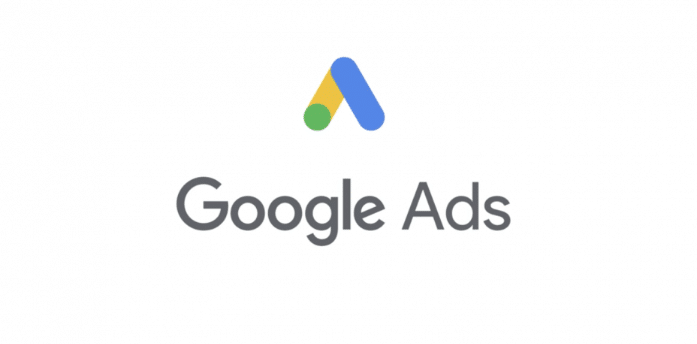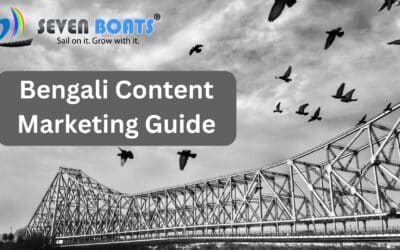
When you consider spending money on online ads to attract your specific target customers, it’s important to choose the right place.
With over 259 million daily unique visitors, Google has become the most popular online advertising platform in the world.
In this Ultimate Guide to Google Ads, we’ll discuss how to start advertising on Google along with specific features of the platform and effective optimization strategies so that you can achieve the best ROI (Return of Investment) from your ads.
It’s not a secret nowadays that the paid ads are the strongest way to generate leads and obtain potential new customers. The more focused and strategic your paid ads are, the more clicks you are likely to generate.
For this reason, Google has become the most sought-after online advertising platform among brands and marketers across all industries.
Before we get started with the steps and techniques of Google Ads, it’s important to learn about Google Ads and its importance in a few details.
What is Google Ads?
Google Ads is an online paid advertising platform that comes under a marketing channel called PPC or pay per click, where advertisers can pay per click or per thousand impressions (CPM or Cost per mille) on the ad.
Paid ad is a proven effective way to attract qualified prospective customers to your business when they’re looking for products or services similar to the ones you offer. With Google Ads, you can increase your website traffic, generate more leads, and boost your sales.
Google Ads offer you to create and publish well-timed ads for your prospective customers. This means your advertising will show up on the SERPs (Search Engine Results Pages) at a specific time while your potential customers are searching for products or services similar to yours on Google search or Google maps. In this way, you can connect with your target customers when they are in need to come across your business.
Now, you might be thinking,
Does Google Ads really work?
Yes, Google Ads campaigns are effective. With proper optimization and a lead funnel, you can get a high ROI from your Google Ads campaign.
Why advertise on Google?
Google is obviously the most used and trusted search engine in the world, getting around 5 billion queries a day. And the ads platform of Google has been in the online advertising field for almost 2 decades, making it some kind of senior in the field of online paid advertising.
Google is also a resource to ask questions used by billions of people throughout the world and answered by both organic results and paid advertisements.
As per Google, advertisers make 8 times for the money they spend on Google Ads. This means if you spend 1 Rupee, you can get back 8 Rupees as an ROI (return of investment) via Google Ads.
Another important reason is that your competitors are leveraging Google Ads. If you are ranking in a higher position organically for a search term, chances are your ranking will be pushed down by your competitors using Google Ads.
Google Ads best practices
If you have failed on Google Ads before, no need to worry. There might be some lack of best practices. try again with these best practices.
Use a planner for your Google Ads campaigns
Using a planner will help you properly organize your ad campaigns. With the help of Google Ads planner, you can see how your advertising will look online, count characters, manage ad campaigns all in a single place.
Avoid broad keywords
Broad keywords often create confusion and are placed in front of the wrong audience by the platform. You will get fewer clicks in exchange for higher ad spends. You will need to test several groups of keywords and optimize what’s working and adjust them into your ads accordingly.
You necessarily won’t get the perfect keywords at the first time, but you will need to keep testing, removing, and adjusting until you get the best match keywords for your ad campaigns.
Remove irrelevant ads
It’s essential that your ads match the searcher’s intent. If it doesn’t, you won’t get enough results to justify your spending on Google Ads. However, it may take a few adjustments and some time to find out the best match.
You should consider creating multiple ads in a campaign to perform a slit test. Once you have figured out which ads are working best, remove irrelevant ads from your campaign.
Optimize your Quality Score (QS)
Your Quality Score (QS) helps google to determine your ad’s ranking on the search engine results page. The higher your ads rank, the more clicks you will likely get.
If you have a lower Quality Score, you will have fewer chances to appear in front of your target audience. You will be informed of your Quality Score by Google, but optimizing and improving depends on you.
Optimize your ads landing pages
Only ads aren’t enough to convert a viewer into the lead, after click user experience is equally important. The first place where your viewers land after clicking your ads is your landing pages. Your landing pages should contain the same keywords as your ads, solutions of pain point your viewers searching for, and all the answers your viewers possibly have in their minds.
besides, your landing pages should eliminate all the risk factors your viewers may feel to make a transaction with your business.
Google Ads terms to be familiar
There are some common terms that are used in the whole process of Google Ads. Knowing these terms will help you clearly understand the Google Ads process and to create, maintain, and optimize your ad campaigns effectively.
Certain terms are specific to only Google Ads, while others are generic to any PPC advertising.
Keywords – Keywords are words and phrases that align with the search intents of searchers. Searchers type a query with keywords on Google’s search field, and Google displays a wide range of results related to the keywords.
PPC – PPC, refers to pay per click. It’s a form of advertising where advertisers pay according to each click for an ad. This term isn’t specific to only Google Ads. PPC is the most common category of online paid advertising on several online channels including Google, Facebook, Twitter, and so on.
AdRank – AdRank is the placement of your ad on the search engine results page.
Campaign type – before you create an ad campaign on Google Ads, you will have 5 options – display ads, search ads, app ads, shopping ads, and video ads.
Bidding – bidding is the foundation of Google Ads. Advertisers select an amount that is the maximum they are willing to pay for an action taken on their ads. The higher the bidding amount, the better placement you will get. You will have 3 options for bidding your ad – CPM or cost per mille, CPC or cost per click, and CPE/CPA or cost per engagement/Action.
CTR – it refers to click-through rate which is the total number of clicks your ads get in the proportion to total views.
Conversion rate (CVR) – it’s the total number of forms submitted in proportion to the total number of visits on your landing pages.
Related reading: How to increase your conversion rate?
Display network – Google Display Network, commonly known as GDN, is a network of websites that are agreed with Google to show ads on their web pages in exchange of certain commission.
Ad Extensions – ad extensions allow advertisers to supplement a Google ad with required additional information at no extra cost. These extensions include 5 types – call, site link, location, app, and offer.
Quality Score – Quality Score is the determining factor of AdRank. It measures the quality of the ad by analyzing CTR, keyword relevancy, landing page quality, and most importantly past performance on the search engine results page.
Step-by-step guide to Google Ads
How to create and use Google Ads?
Creating a paid ad campaign on Google is very simple and easy as the platform itself guides you through the whole process and helps with useful hints across the way. Once you enter the Google Ads platform and select “start now”, you will be guided through the range of steps to get your Google Ads campaigns up and running. If you have everything ready on your hand such as image and ad copy, the setup will hardly take 10 minutes to complete.
Measuring the results and optimizing the ad is the most important part of running an ad campaign on Google. These are some steps you will have to follow to make sure your ad campaign is optimally set up on the Google Ads platform.
Link Google Analytics
Most probably you already have set up Google Analytics on your website for tracking traffic, conversions, and other necessary metrics. Now, you will also need to link your ad to your Google Analytics account. This linking setup will help you track and analyze your ads as you will be able to see these events in one place.
Add UTM codes
UTM codes are Urchin Tracking Module codes that help to track activities associated with the specific links where these codes are executed. Adding UTM codes on your Google Ads will help you track the most effective area of your ad campaign and you can optimize your campaign in a better way as you know what’s really working and generating results.
You can either include UTM codes at the campaign level so that you don’t need to include this code manually for each ad URL, or you can include manually using Google’s UTM builder.
Set up conversion tracking
Although conversion tracking isn’t indispensable, it can tell you accurately how many leads or sales you have got from your Google Ads campaigns, making it very useful to understand the exact ROI of your ad campaign.
Integrate your ad with CRM
Most probably you already use a dedicated CRM to track your lead flows and contact data, integrating your CRM with Google Ads will help you understand more efficiently which ad is working on your target customers so that you can make wise decisions how and when you should continue marketing to them with relevant offers and updates.
Types of ad campaigns on Google
Google Ads offers 5 types of advertising campaigns and you can choose one of them to promote your business, product, or service on Google Ads.
5 campaign types on Google Ads –
- Search ad campaigns
- Display ad campaigns
- Video ad campaigns
- App ad campaigns
- Shopping ad campaigns
- Discovery Ads
- Smart Ads
- Local Ads
Search ad campaigns – search ads are ad contents that appear on the search engine results pages (SERPs) on Google. The best thing about search ads is that they appear in front of users who are looking for information related to your business.
Display ad campaigns – Google owns a network of websites that are agreed to display ads on their web pages in exchange for commissions on clicks or impressions, known as Google Display Network or GDN. These ads are usually image contents that attract viewers attention away from the main web content.
You don’t need a web designer to create online ads! There are many startups that may not have the budget to afford one anyway! That doesn’t mean that you will not be able to create online ads and dip your beak into the stream of internet traffic. Google’s Display Ad Builder is there for beginners who want to learn the ropes of creating eye-grabbing online ads.
Video ad campaigns – YouTube belongs to Google and it’s also a powerful search engine for video content. Video ads appear before, after, or even in the middle of YouTube videos.
App ad campaigns – app ad campaigns are designed to promote the mobile applications of a business using several Google channels such as Google Play, Google Search Network, Google Display Network, and YouTube. Your ad will be displayed in front of the right audience to encourage them to take certain actions within your app.
Shopping ad campaigns – shopping ads are designed to promote particular products or product lines. These ads include product information majorly images and prices and appear on the search engine results pages (SERPs) related to specific search terms.
The call to action, or the words that mobilize the online user into clicking, has to be catchy in your ad copies.
Bidding strategies on Google Ads
Once you have completed everything of your Google ads including set up and tracking, the next step is bidding. The ranking of your Google ads typically depends on your bidding.
While the amount you want to spend depends on your business goal as well as budget, there are certain settings and strategies you must be aware of before launching your Google Ads campaigns.
Manual vs. Automated bidding
When it comes to bidding, you will have 2 options to bid your keywords – manual and automated. Let’s discuss on how they work.
- Manual bidding – you can set the bid amount yourself for your keywords and ad groups. Therefore, you will get scopes to reduce your expenses on poor-performing ads.
- Automated bidding – you can set your bidding for automated where Google will adjust your bid amount on the basis of your competitors’ bidding. But you can limit your maximum budget. In this case, Google will automatically analyze your chances within the range to provide you the best scope to winning the bid within these limitations.
Bidding on branded terms
Branded terms are those where the name of your business or brand or product is used. Bidding on the branded search terms raises several advantages and disadvantages as well. A major advantage includes, it helps prospects that are already familiar with your brand to find out your business quickly without the effort of scrolling diverse search results.
On the other hand, disadvantages include, bidding on branded keywords have been found a waste of money when it comes to driving organic traffic to your business.
Another debate in favor of bidding on branded search terms is that if you don’t bid on your branded terms, chances are your competitors will take the benefits that should belong to you.
CPA or cost per acquisition
If the concept of spending money only on prospects to leads conversion without any guarantee of sales makes you uncomfortable, then you can consider setting up a CPA instead where you will have to pay only when a prospect converts into a paying customer.
Although this bidding system may seem to be a little bit expensive, it comforts you as you know that you will have to pay only when you get a paying customer. This bidding strategy helps advertisers to track and justify their ad spends as well as calculate the ROI more accurately.
Audience segmentation in Google Ads
The life of advertisers on Google is about to get easier! With new features and tools being added to Google Ads, it will be possible for advertisers to not just find everything they are looking for under one umbrella, but also preview their advertising message according to the type of audience. Some of these features existed in an earlier stage. With these launches, the work done in the past goes one step further.
Let’s look at them one by one.
The big one is the feature where advertisers can segregate their audience and check out the preview of the ads they have bought through Google Ads. Previously, previews were available only for searches through keywords and other metrics like location, device and language. Now, the segregation can be done through audience lists, like website visitors, customers, YouTube users and the like.
The idea is to ensure that advertisers have a good idea of where and how their advertisements will appear. If they find something needs to be fixed, they can do so immediately. Ads in the preview will appear according to the bids that they have made while buying the ad. They will appear as per the bid: in the middle or at the top or bottom of the page.
Another big takeaway of this new feature launch is that advertisers can now check out why their ads are not appearing as they should. When they find out the reason through Google Ads, they can take steps to fix the problem. Earlier, ad owners had to go through a virtual maze to fix the problem! Now they can quickly do it. For example, if the problem is with the budget, you can simply click on ‘Edit Budget’ and get it sorted.
With this launch, Google Ads hopes to bring in more advertisers into the fold.
Call conversion with Google Ads
One of the features that is part of AdWords is imported call conversions. According to Google, the rise of calls made to businesses over phone has shoot up by 73% in the period of 2015 to 2019. Many of these phone calls are made over a traditional phone line as opposed to VoIP calls. Google wants to bring all the data on a single platform through imported call conversions.
This feature promises to help users make more sense of their call conversion data. Additionally, calls will be measured in metrics other than the usual one of gauging call length. Google says:
”Imported call conversions now allows you to go a step beyond call length and measure the true conversion value of paid calls from mobile click-to-call ads or your website.”
Use of ad extensions
Ad extensions are additional enhancements that you can add to your Google ad campaigns for better CTR. Few of the important ad extensions are snippets, call out text, call extension, place or location extension, sitelink extension, promotion extension, price extension, app extension, lead form extension
Final words
As paid marketing campaign is the strongest strategy to generate leads and customers, Google Ads has become the most popular online advertising platform among brands across all industries for its billions of search queries per day. Therefore, online paid advertising cannot be performed without using Google Ads.
If you want to leverage Google Ads scientifically to achieve your business goals faster, contact 7 Boats Info System immediately. Hope you liked our guide to Google Ads
Also, consider exploring our digital marketing course to learn digital marketing skills including Google Ads in a practical hands-on method.








I love how the QS is becoming more important than ever. The future is all about quality!
Thanks, Debaiyoti for your perspective on Google Ads!
This was very interesting and informative as well , learned a lot from this blog..
Interesting content.
Got to know a lot about google ads. thank you
interesting and creative blog
For freelancers just starting off, this article is quite beneficia